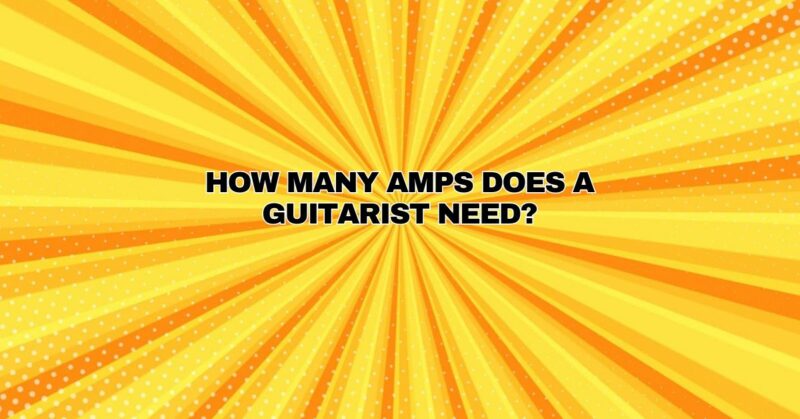The question of how many amps a guitarist needs is a multifaceted one that depends on various factors, including the guitarist’s playing style, musical genre, performance venues, and personal preferences. Unlike the electrical unit of measurement “amps” (amperes), which represents the flow of electric current, the term “amps” in this context refers to guitar amplifiers. Guitar amplifiers come in various wattages and configurations, and selecting the right one is crucial for achieving the desired tone and volume. In this article, we’ll explore the factors that determine how many amps a guitarist needs and provide guidance for making an informed choice.
1. Playing Style and Genre:
The style of music you play and your playing style are significant factors in determining the type and wattage of amplifier you need. Different musical genres and playing techniques have distinct requirements:
- Clean Tones: If you primarily play clean guitar tones for jazz, country, or certain rock genres, you may not need an amplifier with high wattage or excessive distortion capabilities. Low to moderate wattage amplifiers in the 15-30-watt range can provide adequate volume and clarity for these styles.
- Classic Rock and Blues: Guitarists who focus on classic rock or blues often seek amplifiers that can produce smooth overdrive and tube-like saturation. Amps in the 30-50-watt range are typically suitable for these genres, providing enough power for live performances without overwhelming smaller venues.
- Hard Rock and Metal: Genres like hard rock and heavy metal demand amplifiers with higher wattage and distortion capabilities to achieve the saturated and aggressive tones associated with these styles. Amplifiers in the 50-100-watt range are common choices for metal guitarists.
2. Performance Venue Size:
The size of the venues where you perform plays a crucial role in determining your amplifier requirements. Different venues have different volume needs:
- Small Venues: If you mainly play in small clubs, cafes, or intimate settings, lower-wattage amplifiers (15-30 watts) can suffice. These amps can deliver adequate volume without overwhelming the audience or bandmates.
- Medium-Sized Venues: For gigs in medium-sized venues, such as theaters or mid-sized clubs, amplifiers in the 30-50-watt range are generally appropriate. They provide a good balance of power and portability.
- Large Venues: In larger venues, like concert halls or outdoor stages, higher-wattage amplifiers (50 watts or more) may be necessary to ensure your sound reaches the entire audience. However, sound reinforcement systems can also play a significant role in larger venues.
3. Stage Setup and Sound Reinforcement:
Consider how your amplifier will be used in your stage setup. Will you mic your amp through the venue’s PA system, or will you rely solely on your amp’s built-in speakers? Using microphones and sound reinforcement allows you to use lower-wattage amplifiers because the sound engineer can control the overall volume through the mixing board. This setup can be advantageous for achieving consistent sound levels and tone.
4. Personal Preferences:
Your personal preferences and tonal objectives also influence your amplifier choice. Some guitarists prefer amplifiers with higher wattage for clean headroom, control over dynamics, and the ability to achieve power amp distortion. Others may prioritize portability, ease of use, or specific tone-shaping features.
5. Multichannel Amps and Features:
Consider whether you need an amplifier with multiple channels, built-in effects, or specific tonal-shaping features like equalization controls. These factors can affect your amplifier choice based on your playing style and versatility requirements.
Conclusion:
Determining how many amps a guitarist needs involves a careful consideration of playing style, musical genre, venue size, stage setup, and personal preferences. There is no one-size-fits-all answer, and the ideal amplifier for one guitarist may not suit another. It’s essential to balance your amp’s wattage with your specific gigging needs and tonal goals.
Experimenting with different amplifier configurations, attending local music store demos, and seeking advice from experienced guitarists can help you find the perfect amp for your playing style and performance requirements. Ultimately, your amplifier should be a tool that allows you to express yourself musically and achieve the tones you desire on stage.


